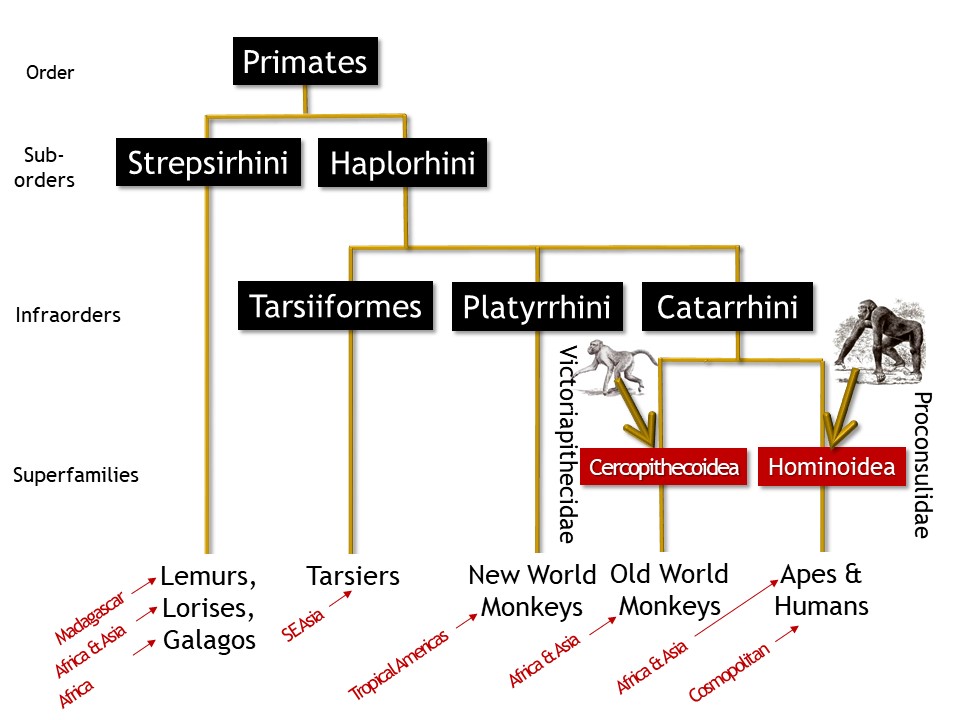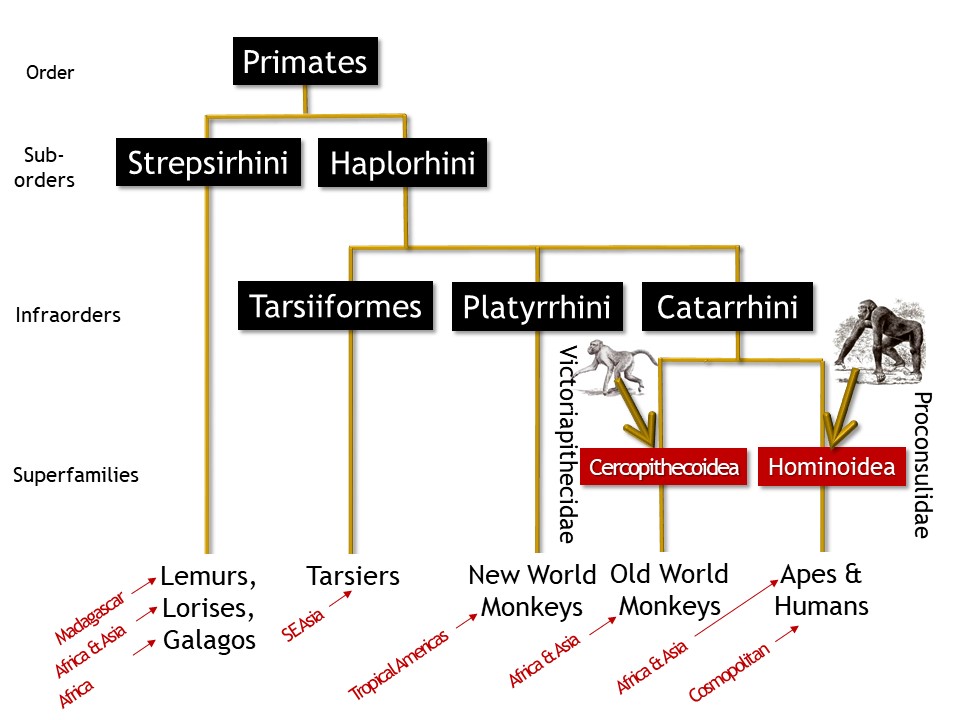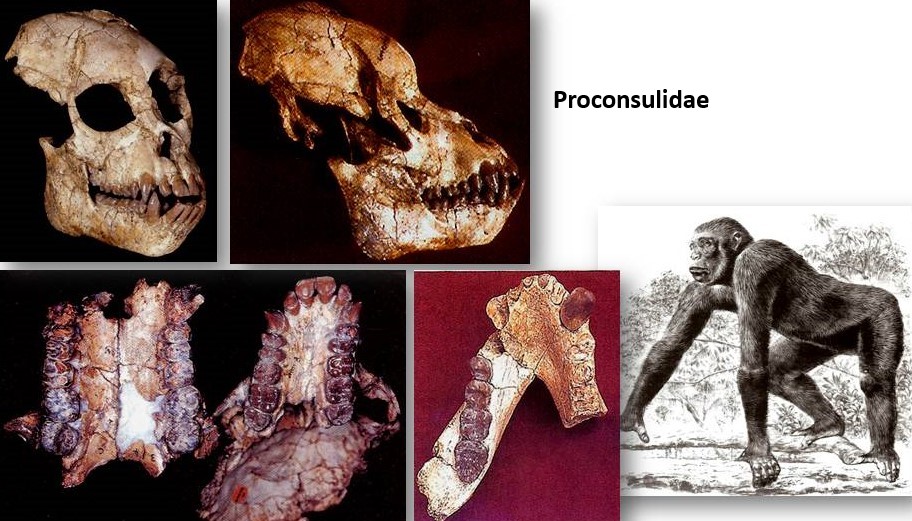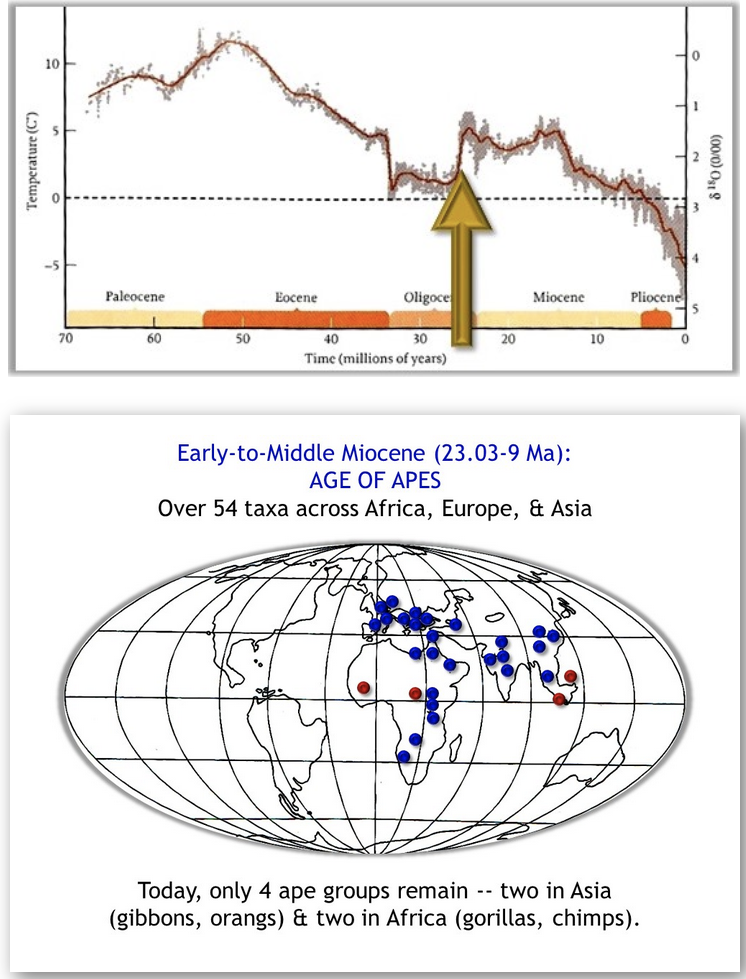Lab 10 Miocene Fossil Primates
1/14
There's no tags or description
Looks like no tags are added yet.
Name | Mastery | Learn | Test | Matching | Spaced |
|---|
No study sessions yet.
15 Terms
Miocene Epoch
23.03-5.33 Ma
Where?
East Africa
Miocene Primate Traits:
Forward-facing eyes
Nose below eyes
Post-orbital bar
Nails on digits
Divergent hallux
Miocene Haplorhine Traits
Closed eye orbits
Dry nose
Internal lacrimal ducts
Miocene Catarrhine Traits
2.1.2.3 dental formula (2 premolars)
Frontal-sphenoid cranial bone contact
Ear tubes
Victoriapithecidae: (Superfamily Cercopithecoidea)
Have the diagnostic traits of the Superfamily Cercopithecoidea because they are Old World monkeys

Proconsulidae: (Superfamily Proconsuloidea)
Have the diagnostic traits of the Superfamily Hominoidea and appear to be the early apes that gave rise to later apes in Africa.

Miocene Cercopithecoidea Traits in Victoriapithecidae
Bilophodont molar
Narrow nasal base
Large face relative to brain size (when viewed in profile)
Quadrupedal with a tail

Miocene Hominoidea Traits in Proconsulidae
Y-5 molar
Wide nasal base
Small face relative to brain size (when viewed in profile)
Suspensory, NO tail

VICTORIAPITHECIDAE ADAPTIVE PROFILE:
CERCOPITHECIDAE TRAITS: Bilophodont molar, Narrow nasal base, Large face relative to brain size (when viewed in profile), Quadrupedal with a tail
ACTIVITY: Diurnal (examine the relative size of the eye orbit for skull length)
DIET: Some frugivorous, some folivorous (TBM above 500 g, premolars & molars have low-rounded cusps OR high-crested cusps)
LOCOMOTION: Quadrupedal (look at relative limb lengths)
FOSSIL SPECIES: Victoriapithecus, Prohylobates
GOOD MODERN PRIMATE MODEL: African terrestrial and semi-terrestrial monkeys
PROCONSULIDAE ADAPTIVE PROFILE
HOMINOIDEA TRAITS: Y-5 molar, Wide nasal base, Small face relative to brain size (when viewed in profile), Suspensory, NO tail
ACTIVITY: Diurnal (examine the relative size of the eye orbit for skull length)
DIET: Some frugivorous, some folivorous (TBM above 500 g, premolars & molars have low-rounded cusps OR high-crested cusps)
LOCOMOTION: Suspensory
FOSSIL SPECIES: Proconsul, Morotopithecus
GOOD MODERN PRIMATE MODEL: The four modern ape groups have very specialized locomotor adaptations. The Asian apes are specialized for arboreal locomotion. Proconsulids were not as well-adapted for extreme brachiation as Asian gibbons or quadrumanous clambering Asian orangutans. The African apes are specialized for terrestrial locomotion and NONE OF THE PROCONSULIDS HAD THE KNUCKLE-WALKING ADAPTATIONS of the knuckle-walking African gorillas and chimps! THEREFORE, THERE IS NO MODERN APE THAT SERVES WELL AS A MODEL FOR PROCONSULIDS!
THE AGE OF APES
The early and middle Miocene when they diversified and expanded in range across Africa, Europe, and Asia.
In the late Miocene, forest retraction selected against these large-bodied catarrhines so that today there are only four groups remaining (Asian gibbons & orangutans, African gorillas & chimps).

ORIGINS OF MODERN HOMINOIDS
Molecular divergence data indicate that Asian gibbons are the oldest living apes
Molecular divergence data AND paleontological fossil data indicate that Asian orangutans are the second-oldest living apes.
Sivapithecus
extinct ape that appears to have given rise to the orangutan
also appears to be ancestral to the largest-known ape, Gigantopithecus
Gigantopithecus
Largest-known Ape
May have been 600lbs
NO skeletal remains
Dental adaptations for tough, fibrous foods (bamboo & fruit)